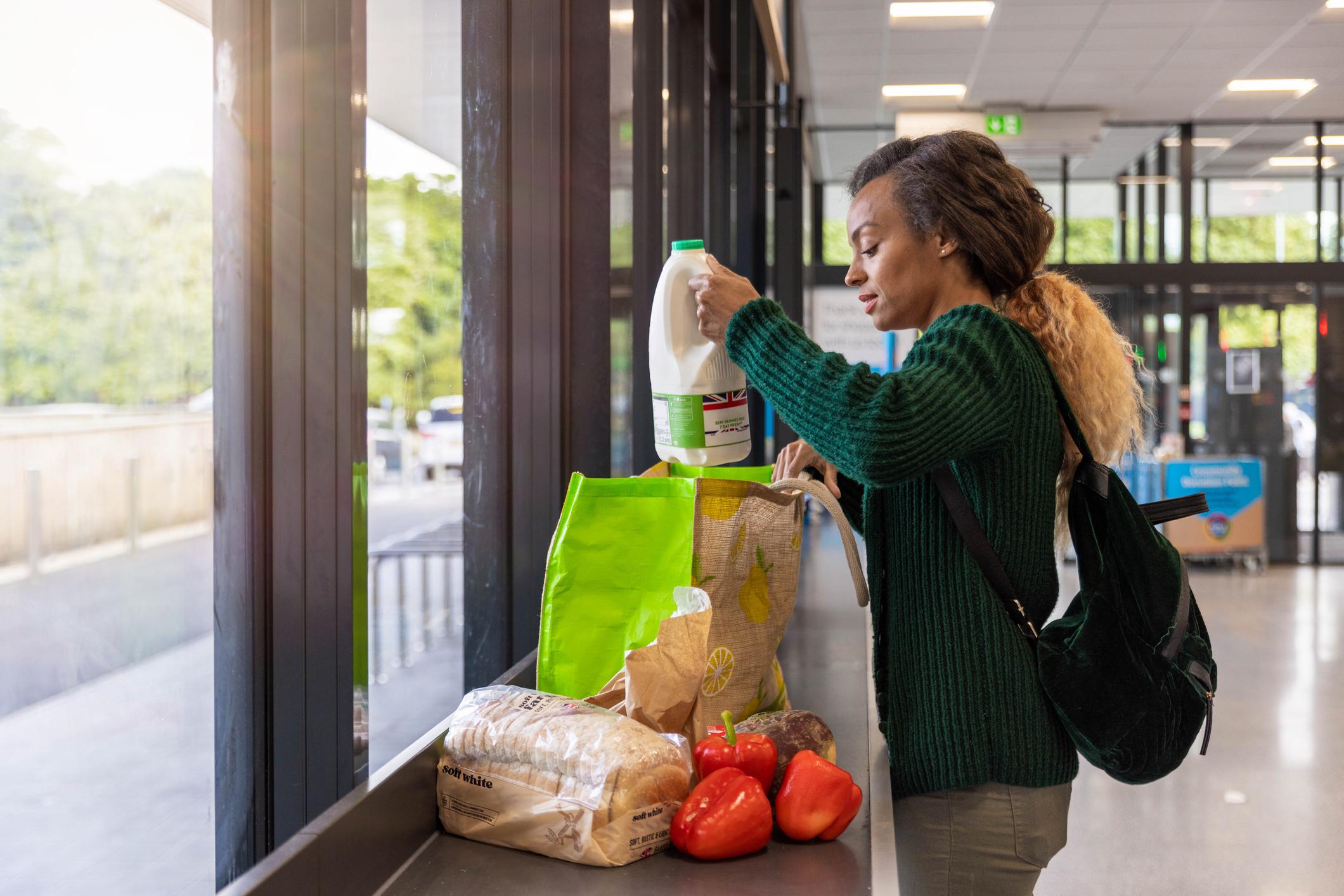
The cost of debt for low-income households in the cost of living crisis
As the cost of living crisis enters a dangerous new phase, it's pushed millions of people to rely on unsecured lending as a last resort to pay for bills and essentials. With interest rates rising, and inflation stubbornly high, it's unclear how much more pressure this strategy can bear.
The human cost of the crisis so far is as clear as it is disturbing. By May 2023, nearly two thirds of the poorest 40% of low-income families, 7.3 million households in total, were being forced to make sacrifices on one or more essential – such as prescription medicine, adequate clothing, or a hot shower. Within this number, 5.7 million were routinely reducing or skipping meals. The social scarring will likely stay with us for decades to come.
But even at this apparent peak in economic suffering, the depth and breadth of hardship is being temporarily stayed by strategies of last resort.
Financial coping mechanisms are becoming increasingly unaffordable
The acceleration in inflation, driven by the price of essentials like energy and food, solicited a range of coping mechanisms from households. Those most fortunate have been able to cut back on more luxury spending, or else reduce the amount put aside each month for savings. Others have been forced to actively spend savings, or else have relied upon gifts in support from relatives and friends.
But new analysis for this blog from our cost of living tracker survey has shown that for a fifth (20%, 2.3 million) of low-income families, these strategies have included taking on new lending to pay bills like rent and energy. In total, 5.7 million families among the poorest 40% had around £14.2 billion in unsecured debt (personal loans, credit cards, overdraft facilities, pay-day lenders and licensed doorstep loans) between them as of May 2023, around £2,500 on average per family.[i]
As of May 2023, we estimate an annualised cost of financing this debt at around £3.9 billion, or around £680 per household on average. We also estimate that the same total and mix of loans would have cost £210 million less to finance just 18 months previously, before the Bank of England started it’s tightening cycle.
Our new analysis also provides evidence that low-income families are becoming increasingly credit constrained, and that this may be contributing directly to worsening material hardship. With the unit cost of retail credit rising between May 2022 and May 2023, the amount of total debt owed across licensed, unsecured lending has fallen by £1.5 billion. Over the same period, the number of families going without essentials has risen by 420,000. A total of 2.8 million low-income households (24%) report having been declined lending between May 2021 and May 2023, and 60% of low-income households (3.4 million) with an unsecured loan are also in arrears with at least one household bill or lending commitment.
Even as the rate of price increases slows, there is still a danger that things will continue to get worse for people at the sharp end of this crisis. As of May 2023, much of the effects from past interest rate rises were still to make their way through the financial system, and since then the Bank of England has increased the base rate of interest by a further 50 basis points (0.5 percentage points) with further rises expected. With 2.3 million families reporting having to borrow or use a credit card to pay for essential bills at some point during the cost of living crisis, the breadth and depth of family sacrifices could yet worsen due to the rising cost of consumer credit.
Policy makers need to address this crisis
The fragility of the current situation ought to be a preoccupation for policy makers, but on the contrary, it is in danger of being overlooked. While rising mortgage costs tend to dominate the national conversation, the affordability of short-term credit remains a vital factor in preventing an already brutal crisis from getting rapidly worse. As interest rates continue to rise, and even as inflation falls back, we risk the tragedy of a second wave of crisis as millions of people struggle to smooth out their incomes any further due to increasingly unaffordable credit. It is for this reason that JRF will continue to take a close look at debt and borrowing among low-income households for the remainder of this year and beyond.
Addressing underlying economic insecurity
But it is also important to take a wider view still. Highlighting these exposures to rising interest rates begs a question of not just financial insecurity, but of underlying economic insecurity as well, across the breadth of personal factors, social relations and household resources. A new report from JRF published last week marks the start of a new ambitious programme of work seeking to better understand the dimensions and drivers, risks and opportunities, of wider economic security in the 21st century. There is little doubt that far too many UK families went into the 2020s under equipped, under supported and underprepared. But that doesn’t have to define the decade.
Methodology of calculations
The majority of statistics used in this blog come from JRF’s cost of living tracker survey, carried out by Savanta. Savanta surveyed 4,004 UK adults aged 18+ in households in the lowest 40% of equivalised household income online between 3–18 May 2023. Data was weighted to be representative by age, gender, region, ethnicity and housing tenure. The data tables are available on Savanta's website.
The sample is representative of low-income households across the UK, and our low-income threshold is based on figures from the Households Below Average Income Survey (HBAI) 2021–22.
Our definition of low-income households for this blog is households in the bottom 40% of incomes across the UK, using a Before Housing Costs (BHC) equivalised household income. This income definition includes earnings and benefits, as well as other income sources. Households had to have a BHC equivalised household annual income of under £25,933 to participate in the survey (up from £24,752 in the October 2021 and May 2022 waves, and down from £26,570 in the October 2022 wave, due to new income data in 2020–21 and 2021–22 HBAI).
Where we have scaled up the survey findings to population level, this has been done by JRF, and uses population numbers based on the HBAI 2021–22 survey. We have continued to use this survey as the basis for the population for consistency with earlier cost of living surveys. HBAI analysis found that the UK had 11.7 million households under this income threshold. Where we have grossed numbers up to population level, we have used this number of households to do so.
Where we have estimated the amount of lending by type of borrowing, we have taken the following approach:
- Respondents were asked to choose a band that reflected the amount of debt held, for example £700–£749.
- We have then used the midpoint of these bands (for example, £724.50) and multiplied it by the number of responses in each band, taken the total for each type of debt and divided it by the number of households who hold that type of debt. This provided us with the average amount of arrears or savings or debt using the mean, and then we have multiplied this by the number of households experiencing it, and scaled up to population level using HBAI household figures.
- For most debt types for the highest band, we have taken its lower bound (£4,000) – this is a conservative estimate. However, two debt types had high proportions of cases in the highest band: personal loans where we have assumed an average £6,000 in debt for households in this band, and £5,000 of debt for credit cards for households in this band.
Where we have estimated the interest costs associated with each debt type within unsecured lending, we have used the following assumptions:
- Personal loans: calculated an average amount owed of £1,700, taking into account this will be an average amount owed with some households having just taken out a loan and others close to paying it off. We have based the calculation on a three-year term, split into six, six-month periods, with the interest rate reflecting the period when the loan was taken out, so begins at 5.46% and rises to the current Bank of England Money and Credit report estimate of average interest rates for personal loans of 8.27% by May 2023.
- Credit union loans: a similar calculation as for personal loans based on a calculated average amount owed of £600, and assumed a two-year term, split into four six-month periods based on when the loan was taken out. Reflecting the period when the loan was taken out, the interest rate begins at 24.96% and rises to 26.8%, an average suggested by Fair for all Finance. We have assumed the interest rate increases by the same percentage point amount as the Bank of England average personal loans statistics.
- Payday loans: calculated an average loan of £500, and assumed that interest rates are applied at the maximum rate of 0.8% per day – 27% per month, and assumed a term of three months.
- Doorstep loans: calculated an average loan of £540, and assumed a six-month term at an interest rate of 200% per annum.
- Credit cards: calculated an average owed of £1,300, and assumed an annual interest rate of 20.44% based on the Bank of England’s Money and Credit survey.
- Overdrafts: calculated an average owed of £620, and assumed an annual interest rate of 21.78%, based on the Bank of England’s Money and Credit survey, and assumed owing it for every day of the month.
Note
[i] This figure excludes mortgages and benefit debt. The figure also excludes other loan types outside licensed, unsecured loans, including around £3.9 billion in more secured debt (hire purchases, catalogue credit, and collateralised personal loans), £2.2 billion from family and friends, and an estimated £840 million in unlicensed lending (from loan sharks).

This explainer is part of the cost of living topic.
Find out more about our work in this area.
